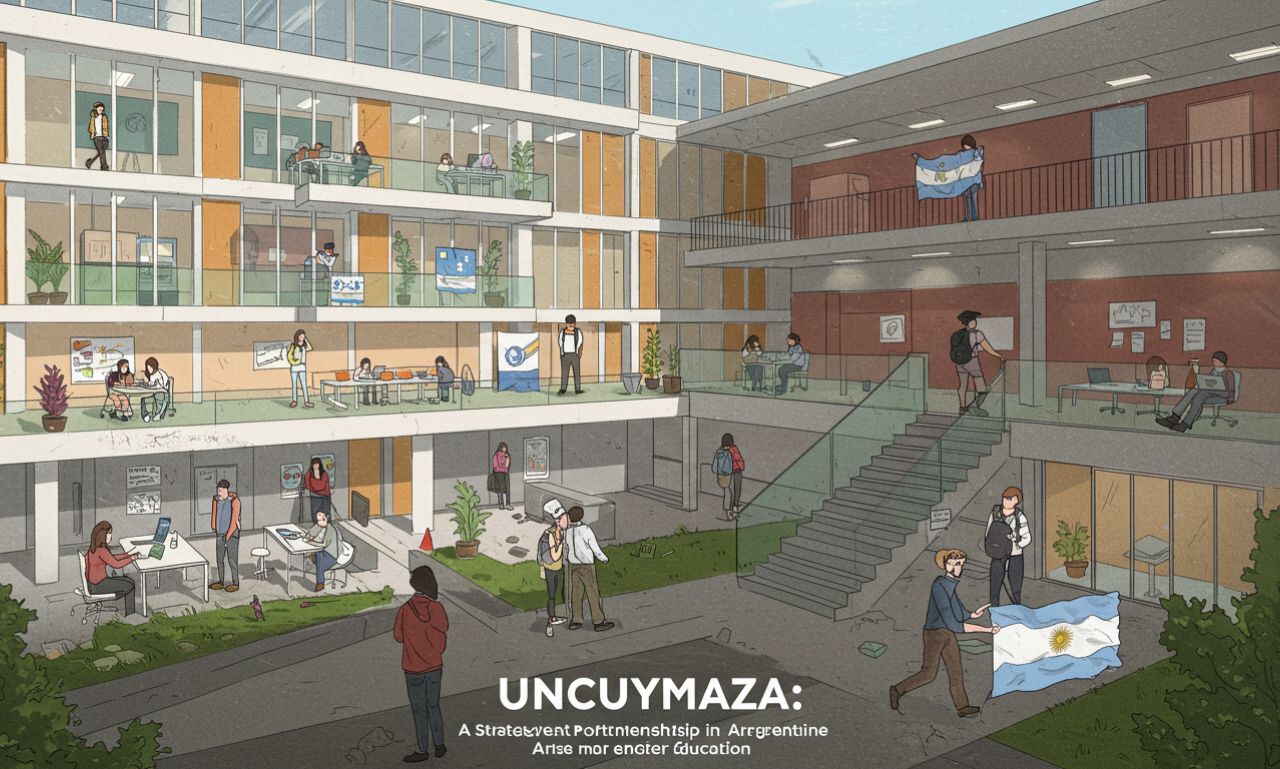In Argentina’s evolving academic landscape, collaboration between educational institutions is playing an increasingly vital role in improving access, research quality, and academic excellence. One such partnership that has attracted attention is Uncuymaza, a fusion of efforts between two prominent universities: UNCUYO (Universidad Nacional de Cuyo) and Universidad Juan Agustín Maza.
Though the term Uncuymaza is informal and not an official university name, it represents a growing synergy between these two institutions. This article explores the context, significance, and potential outcomes of this academic cooperation.
What Is Uncuymaza?
Uncuymaza is a blended term that reflects the collaborative efforts between:
-
UNCUYO (Universidad Nacional de Cuyo) – A public national university based in Mendoza, known for its wide range of undergraduate and postgraduate programs, as well as its strong research credentials.
-
Universidad Juan Agustín Maza (UMaza) – A private university also located in Mendoza, recognized for its focus on health sciences, veterinary medicine, and agronomy.
Together, these institutions are working on various academic, scientific, and cultural initiatives, aimed at enhancing the quality of education and research opportunities in the Cuyo region.
Goals of the Uncuymaza Collaboration
The main objectives behind the Uncuymaza initiative include:
Strengthening Academic Programs
By sharing faculty, resources, and curriculum development strategies, both institutions aim to offer enriched and diversified educational experiences for their students.
Promoting Joint Research
Research collaborations allow the universities to tackle larger, interdisciplinary challenges, particularly in areas like health sciences, environmental studies, and agriculture.
Expanding Access to Higher Education
The partnership may help expand educational offerings to underserved communities in the Mendoza region through outreach programs and flexible learning formats.
Enhancing Institutional Innovation
With different strengths—public vs. private, research-intensive vs. practice-focused—UNCUYO and UMaza bring complementary qualities to the table.
Academic and Student Benefits
Broader Curriculum Options
Students from both universities could benefit from access to a wider variety of electives, workshops, and specialized courses.
Research Opportunities
Those interested in academic or scientific careers can find more pathways to participate in high-impact research projects, possibly even co-supervised thesis work.
Shared Facilities and Events
Uncuymaza could lead to shared use of libraries, labs, and conference venues, giving students and faculty enhanced access to learning resources and networking opportunities.
Dual Programs and Certifications (Potential)
Although not officially announced, such collaborations can open the door to dual-degree programs or certification exchanges, allowing students to earn credentials recognized by both institutions.
Areas of Collaboration
While specific joint programs are still emerging, here are some academic fields where Uncuymaza collaboration is especially promising:
-
Health Sciences – Nursing, medicine, physiotherapy, nutrition
-
Agricultural Sciences and Veterinary Medicine – Both universities have strengths in these domains
-
Environmental Studies – Shared focus on sustainability and regional environmental issues
-
Human and Social Sciences – Including psychology, education, and public policy
-
Technology and Innovation – As both institutions look to modernize their infrastructure and approach to teaching
Impact on Mendoza and the Cuyo Region
Mendoza is a hub for education, tourism, and agriculture in western Argentina. By collaborating, UNCUYO and UMaza can:
-
Attract more students to the region
-
Strengthen the local knowledge economy
-
Improve community engagement through joint social and health programs
-
Support local industries through targeted research and development
In short, Uncuymaza has the potential to become a catalyst for regional growth and innovation.
Challenges and Considerations
Despite the promising outlook, any institutional partnership comes with its challenges:
-
Administrative Coordination – Managing curriculum alignment, credit transfer, and academic calendars can be complex.
-
Autonomy Concerns – Both universities must balance collaboration with institutional independence.
-
Resource Allocation – Ensuring equal benefits for students and faculty from both institutions is key.
-
Public vs. Private Philosophy – Navigating differences in governance, funding, and educational missions can require careful planning.
With open communication and mutual respect, these challenges can be addressed to build a long-term strategic partnership.
Conclusion
Uncuymaza is more than just a mash-up of university names—it symbolizes the potential of collaboration in Argentine higher education. By combining the strengths of UNCUYO and UMaza, this partnership seeks to offer better educational outcomes, stronger research networks, and enhanced community impact.
As this collaboration continues to evolve, it could serve as a model for cooperation between public and private institutions throughout Latin America. For students, faculty, and the broader community, Uncuymaza represents a shared investment in the future of learning and innovation in the region.
